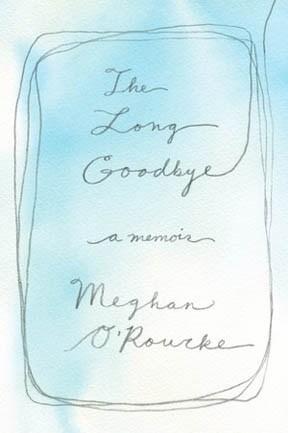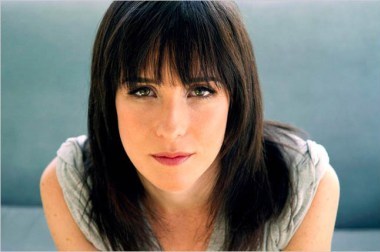Meghan O’Rourke’s honest, artful memoir of a death and grief The Long Goodbye: A Memoir by Meghan O’Rourke. Riverhead Books, 297 pages

In the year after Barbara O’Rourke was diagnosed with advanced colorectal cancer, in her early fifties, her 32-year-old daughter, Meghan, became engaged, got married, and then separated. She changed jobs, divorced, started dating a man on the opposite coast, numbed out, and melted down.
Meghan O’Rourke portrays this siege of anticipatory grief in her celebrated memoir, The Long Goodbye. The title refers to the fact that she was granted time with her beloved mother. Diagnosed in May 2006, Barbara died on Christmas of 2008. But it also refers to the fact that Meghan’s goodbye to her mother will never end. Living without her remains like “waking up in a world without sky.”
Barbara and her husband both worked for many years for a private school in Brooklyn, before Barbara became a headmaster in Connecticut. As Meghan and her two younger brothers were growing up, the family spent summers at friends’ forest cabins and rural retreats. In O’Rourke’s portrait, Barbara enjoyed motherhood and fostered independence, creativity, and healthy self-esteem in her children; she exuded serenity and yet was wry and feisty. Barbara gave her daughter a blank journal when she was five that helped turn her toward writing. Now an accomplished poet, O’Rourke evokes life’s hardest passage precisely. At the same time, she muses on its meaning and recalls the past, including the many bone-deep gifts of love that fueled her pain.
She writes:
When we are learning the world, we know things we cannot say how we know. When we are relearning the world in the aftermath of a loss, we feel things we had almost forgotten, old things, beneath the seat of reason. . . .
When we talk about love, we go back to the start, to pinpoint the moment of free fall. But this story is the story of an ending, of death, and it has no beginning. A mother is beyond any notion of a beginning. That’s what makes her a mother: you cannot start the story.
But, oh hell, you keep trying.
When Barbara’s time came, at age 55, after protracted medical ordeals, the family gratefully called hospice. While praising hospice as a balm in her mother’s passing, O’Rourke shows that’s also a relative measure—because nothing’s great when your mother is dying. Barbara herself seems to achieve the hardest task, of letting go:
[R]esearchers now think that some people are inherently primed to accept their own death with “integrity” (their word, not mine), while others are primed for “despair.” Most of us, though, are somewhere in the middle, and one question researchers are now focusing on is: How might more of those in the middle learn to accept their deaths?

[Meghan O’Rourke, photo by Sarah Shatz.]
Although both her parents, ex-Catholics, were atheists, O’Rourke nonetheless grew up with “an intuition of God.” After her mother’s death, she yearns for mourning rituals and for the ancient recognition of grief she senses might linger in a church community. Her friends and coworkers scarcely know how to speak with her. O’Rourke conveys her loneliness and, more surprising to her, how lost she felt.
“What is grief?” she wonders. This sends her into literature and out to interview experts. She learns that almost 90 percent of people experience “normal” grief, as she did, while “complicated” grief may require therapy. The book includes five pages of recommended reading. For O’Rourke, two texts became touchstones. Shakespeare’s Hamlet, often seen as being about a young man’s dithering over contingency, reveals itself as a portrait of his devastating grief. Another key book was C.S. Lewis’s memoir A Grief Observed.
The Long Goodbye is that rare book that made me think, soon after starting it, I want to read this again. O’Rourke has a sure sense of sentences, from simple declarations to lyrical descriptions, often with arresting turns of phrase. As Barbara actively dies that last Christmas, she makes “a madrigal of quiet sounds, as if to indicate that she was with us.” As well, O’Rourke tunes her sentences’ and passages’ collective rhythms. The book’s three-part structuring of its diverse content guides the reader. This story of personal loss becomes a window into death’s universal magnitude.
[O’Rourke wrote her memoir while working as an editor and writer at Slate, and nine core essays remain available there.]
The post Rhythm and blues appeared first on Richard Gilbert.
 newest »
newest »
 newest »
newest »
 Thank you for this lovely review, Richard. Learning about grief was essential for me after my father died, and this book may help me further understand the phases I still seem to be struggling with after two years. I'll be sure my library gets a copy and I will be the first to check it out.
Thank you for this lovely review, Richard. Learning about grief was essential for me after my father died, and this book may help me further understand the phases I still seem to be struggling with after two years. I'll be sure my library gets a copy and I will be the first to check it out.






